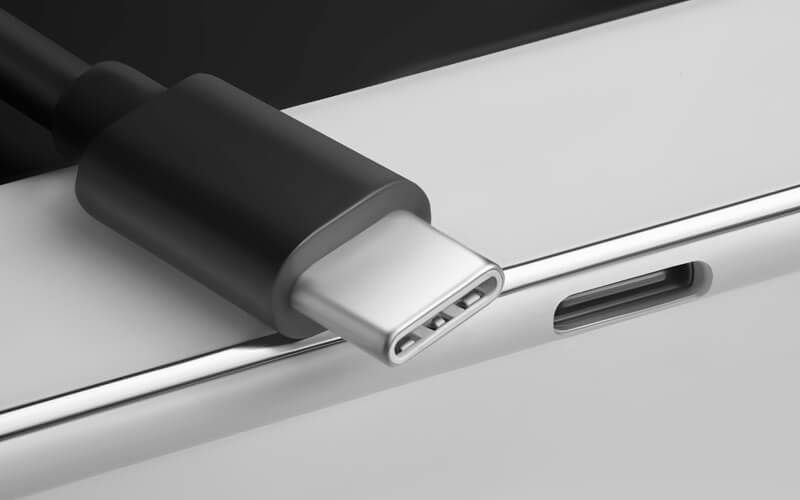
Universal Serial Bus (USB) is on billions of PCs and other devices worldwide. User demand for higher performance displays, docks, hubs and storage and a desire to maintain compatibility to the widely adopted USB Type-C connector has led the USB Promoter Group to introduce USB4 Version 2.0 (USB 4v2), the next version of USB and one that promises to be the fastest version yet. The USB 4v2 specification will enable a plug-and-play interface for digital communication, offering significant advantages in bandwidth and data delivery.
The USB Promoter Group is comprised of Apple, Hewlett-Packard, Intel, Microsoft, Renesas Electronics, STMicroelectronics and Texas Instruments. The key characteristic of the USB 4v2 spec is to enable up to 80Gbps of data performance between laptops and tablets to peripherals such as monitors and storage systems over the USB Type-C cable and connector, utilizing a new physical layer architecture based on PAM3 signal encoding. Pulse-amplitude modulation (PAM) is a form of signal modulation where the message information is encoded in the amplitude of a series of signal pulses.
80 Gbps operation is twice the bandwidth of USB 3.2 and quadruple the bandwidth of USB 2.0. The speed is bidirectional, meaning it can travel to or from the peripherals.
For certain applications, such as driving very-high performance USB4-based displays, the USB Type-C signal interface can be configured asymmetrically to deliver up to 120Gbps in one direction while retaining 40Gbps in the other direction. Keep in mind that another standard called USB-C determines the shape of the connector and the cables that plug into it, while USB PD (short for power delivery) is a protocol/hardware solution that increases USB power capabilities up to 100W and governs how devices charge.
“Once again following USB tradition, this updated USB4 specification doubles data performance to deliver higher levels of functionality to the USB Type-C ecosystem,” said Brad Saunders, USB-IF (Implementers Forum is the support organization for the advancement and adoption of USB technology) Board Chair and CEO. “Solutions seeing the most benefit from this speed enhancement include higher- performance displays, storage and USB-based hubs and docks.”
USB 4v2 is based on a new physical layer architecture, using existing 40Gbps USB Type-C passive cables and newly-defined 80Gbps USB Type-C active cables, while remaining backwards-compatible with USB4 Version 1.0, USB 3.2, USB 2.0 and Thunderbolt. Intel’s Thunderbolt specification recently became open-source, making the integration of Thunderbolt and USB4 easier. New devices with Thunderbolt over USB4 also are expected to become cheaper and the USB interface would be adaptable to more display devices and GPU boxes, courtesy of the royalty-free Thunderbolt.
USB4 introduced the idea of tunneling, which allows multiple protocols to be combined over a single interface to increase flexibility. Tunneling takes a signal and converts it into packets that can be sent along the USB-C cable at the same time as other data. This typically requires less physical hardware and allows multiple types of signals to be run over a single cable.
USB data architecture updates now enable USB 3.2 data tunneling to exceed 20Gbps. Protocol updates are also being made to enable higher performance USB 3.2, DisplayPort and PCI Express (PCIe) data tunneling to best use the higher available bandwidth.
“For engineers, USB4 is defined by its multi-protocol tunneling that architecturally differentiates it from its predecessors – USB 3.2 and USB 2.0,” said USB CEO Saunders. “This updated technical specification extends USB4 speed and data protocol performance, enabling manufacturers to develop products that can deliver USB 80Gbps in addition to existing USB 40Gbps and USB 20Gbps to end users.”
The European Union (EU) has made USB-C charging no longer just a convenience but, by the end of 2024, a requirement for iPhones and all other mobile phones as well as tablets and cameras. From spring 2026, the obligation will extend to laptops. This is a move designed to reduce electrical waste by ensuring that cables and chargers are compatible across devices and encourage people to stick to using existing chargers rather than needing a different charger for every device. Under the EU policy, Apple could continue having its own Lightning plug but would need to offer USB-C as well. All Android phones these days use USB-C for charging.
With the latest version of the USB specification, there is no longer a decimal point to indicate small progressions in the specification, as was the case with USB 3.1 and USB 3.2.
This update is specifically targeted to developers at this time. Branding and marketing guidelines will be updated in the future to include USB 80Gbps both for identifying certified products and certified cables. It will take at least 12 to 18 months before we start to see leading solutions in the market
Follow TTI, Inc. on LinkedIn for more news and market insights.
Statements of fact and opinions expressed in posts by contributors are the responsibility of the authors alone and do not imply an opinion of the officers or the representatives of TTI, Inc. or the TTI Family of Specialists.

